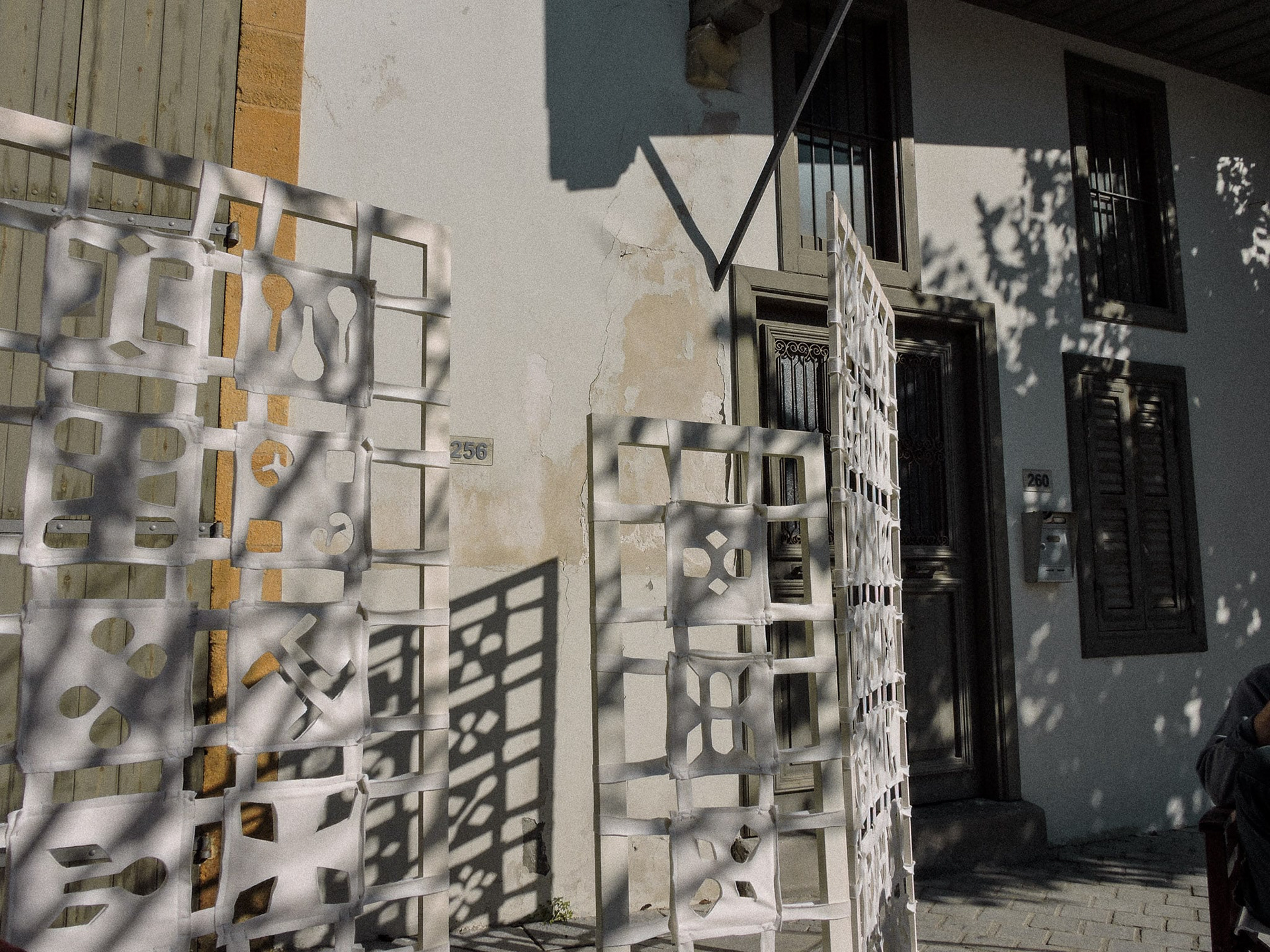The site is located within the Venetian walls of the capitol, right by the green line. The neighborhood around it is diverse containing homes, shops, cafés, restaurants and bars, and because of this the neighborhood’s life varies drastically from day to night. After months of research on my topic and my site, for my final experiment I decided to revisit the downtown area of Nicosia and view it with a fresh perspective. I noticed that in this neighborhood, there is artwork all around, hidden in plain sight. From street art, to posters, factors like these added color and character to these outdoor spaces. Yet, in the particular site I have been focusing on for so long within this neighborhood, these artworks had been covered, painted over. This space longed for life and color. This brought to mind so many questions. I designed looking for answers to these questions, sketching in my notebook while sitting at a nearby café. Street art has a permanence. It is static. I wanted to challenge this traditional notion of “static” art.
Can art be mobile? Would this change its meaning? Would this change its relevance?
For my final project, and to wrap up my research, I would like to explore this concept of impermanent art. My goal is to create an installation piece that:
1) has a flexible design - can be rearranged or move location whenever desired or necessary
2) encourages interaction - encourages people to approach it, analyze it and appreciate it
3) tells a narrative, a personal story explored throughout the term
4) stands as a piece of art, adding character and life to the location.
2) encourages interaction - encourages people to approach it, analyze it and appreciate it
3) tells a narrative, a personal story explored throughout the term
4) stands as a piece of art, adding character and life to the location.





The goal of the project was to address a currently charged socio-political issue within a chosen city, and develop the project through research but also using different experimental processes each week as a means of artistic expression. The project is thus a culmination of research and work across various disciplines including poetry, film, drawing, and sculpture.
I focused my project on Nicosia, the capital of my home country - Cyprus. Since 1974 the Cyprus Issue continues to be an open wound for the country and its people. The invasion of 1974 left a third of the island illegally occupied, displacing an estimated 210,000 people and resulting in the division of the island to this day. The green line is a physical entity that divides the country and runs through the capital, Nicosia. To this day, Nicosia remains the only divided capital in the world. Walking along the green line, one can see abandoned buildings and homes left untouched since the time of the invasion. Many of them are slowly decaying after being abandoned and exposed to natural elements for decades. These buildings are an integral part, as well as an important reminder, of our history.
This project explores ways in which we can revive these abandoned areas. Over a three month period, interviews were conducted with people who lived through the invasion and who spoke of their memories of the currently occupied region. Traditional Cypriot patterns from craft arts were also looked at for design inspiration, and were reproduced in the context of each week’s delivery.





